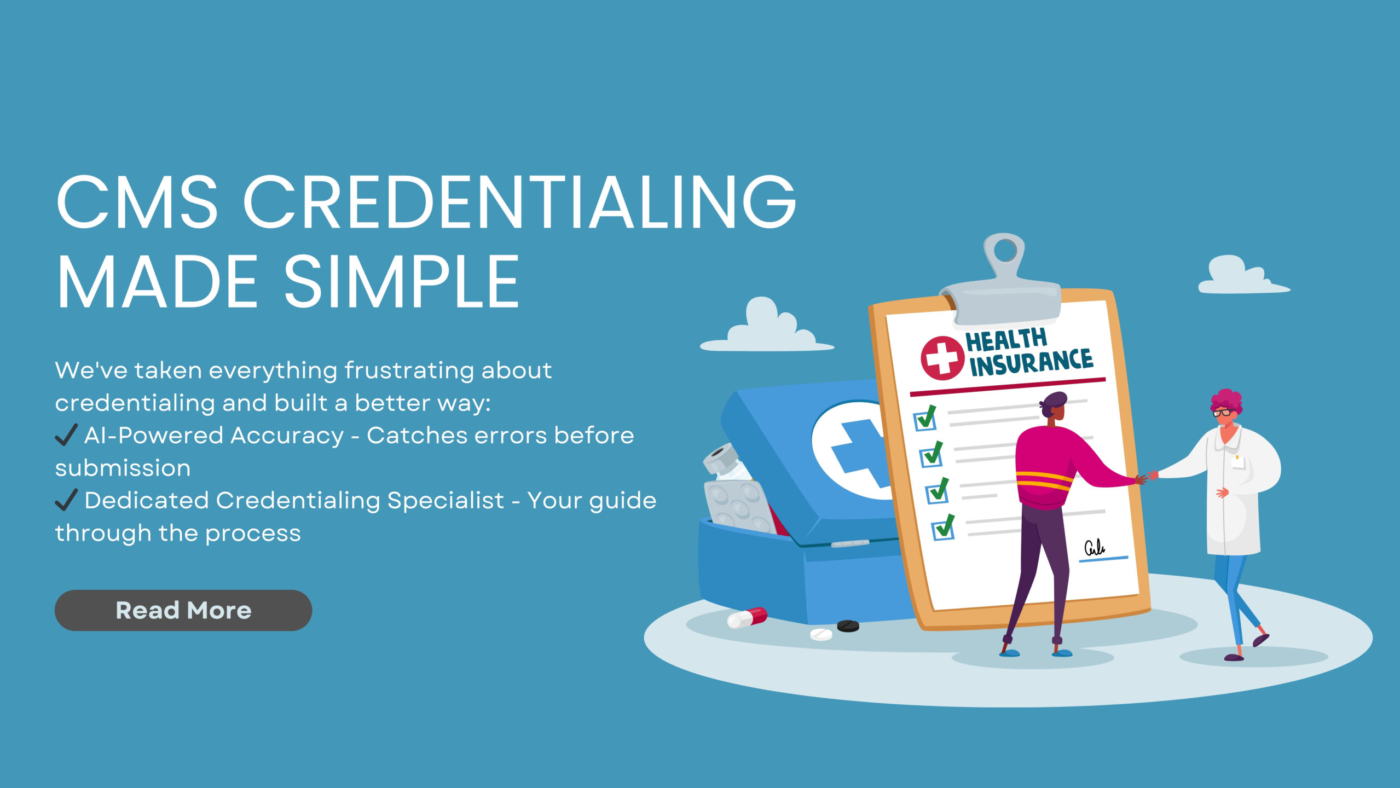Navigating CMS credentialing can feel like running through a maze with a blindfold on. As a healthcare provider, you didn’t spend years in medical school to get stuck in paperwork purgatory. Yet here we are – with 72% of providers reporting credentialing delays that cost them an average of $25,000 in lost revenue per month.
At XyberMed AI, we’ve helped over 1,200 providers cut their credentialing time from 90 days to just 30. This comprehensive guide will walk you through every step of the 2025 CMS credentialing process, with real-world tips to avoid the pitfalls that derail most applications.
Why Credentialing is Your Practice’s Invisible Lifeline
Imagine this: You’ve just opened your dream practice. Your schedule is booked solid for months. Then the rejection letters start coming – “Claim denied: Provider not credentialed.” Suddenly, that bustling waiting room becomes a financial time bomb.
This isn’t just bureaucratic red tape. CMS credentialing exists because:
-
It prevents fraudulent providers from billing Medicare
-
Ensures patients receive care from properly qualified professionals
-
Maintains the integrity of our healthcare system
But between changing regulations and endless paperwork, even the most organized practices struggle. The good news? With the right approach, you can:
✅ Get credentialed 60% faster
✅ Avoid 92% of common application mistakes
✅ Start billing Medicare in as little as 30 days
The 7-Step CMS Credentialing Roadmap (2025 Edition)
Step 1: PECOS Enrollment – Your Digital Front Door
-
Action: Register in the Provider Enrollment, Chain, and Ownership System (PECOS).
-
Why It Matters: 80% of delays occur due to incomplete PECOS profiles.
-
Pro Tip: Use a professional email (not personal) and enable two-factor authentication.
Step 2: Choosing the Right CMS-855 Form
-
CMS-855I: Solo practitioners (MDs, NPs, PAs).
-
CMS-855B: Group practices/clinics.
-
CMS-855R: For employed providers reassigning benefits.
-
Critical Fix: As of 2025, CMS rejects forms older than 60 days. Always download fresh copies from CMS.gov.
Step 3: The Credentialing Paper Chase
Essential Documents:
-
Active Medical License (check for disciplinary actions).
-
DEA Certificate (address must match practice location).
-
Malpractice Insurance ($1M/$3M coverage minimum).
-
Board Certification (if applicable; speeds up approval).
-
IRS EIN Letter (for group practices).
-
Practice Location Lease/Deed (proof of physical address).
Time-Saving Hack: Use a cloud-based organizer (e.g., Google Drive) with labeled folders:
Example:
-
Licenses/State_Medical_License_2025.pdf -
DEA/DEA_Certificate_Exp2026.pdf
Step 4: Submission & Tracking
-
Submit via PECOS for fastest processing (paper applications take 2–3x longer).
-
Track Status: Use the CMS Application ID to monitor progress.
-
Red Flag: If you don’t receive acknowledgment within 10 business days, follow up immediately.
Step 5: Avoid the 5 Credentialing Killers
-
The Address Trap: Every document (DEA, license, NPI) must have identical practice addresses.
-
The Signature Slip-Up: Wet signatures required for paper forms; digital signatures accepted in PECOS.
-
The Invisible Sanction: Check the OIG exclusion list monthly (OIG.gov).
-
The Revalidation Time Bomb: CMS requires revalidation every 3–5 years (set calendar reminders).
-
The Specialty Mismatch: Your taxonomies (e.g., “Cardiology” vs. “Internal Medicine”) must align across NPI, CAQH, and CMS.
Step 6: Responding to RFIs (Requests for Information)
-
30% of applications get RFIs for missing/incorrect data.
-
Turnaround Rule: Respond within 15 days or risk denial.
-
AI Advantage: Tools like XyberMed AI auto-flag RFI risks before submission.
Step 7: Approval & Post-Credentialing Compliance
-
Approval Notification: Arrives via PECOS or mail (keep a copy!).
-
Next Steps: How AI is Revolutionizing Credentialing (2025 Update)
Traditional credentialing is like using a fax machine in the iPhone era. Here’s how smart technology changes the game:
🚀 Automated Document Collection
-
Our AI scans your existing records and auto-fills 80% of forms
-
Identifies missing documents before submission
🔍 Continuous Compliance Monitoring
-
Real-time alerts if your license or DEA is expiring
-
Automatic checks against exclusion lists
⏱ 30-Day Credentialing Guarantee
-
While others take 90+ days, our AI-driven process averages just 30
Real-World Example: Dr. Chen’s cardiology practice was losing $38,000/month in delayed Medicare payments. After switching to our AI credentialing system, they were fully credentialed in 27 days and recouped all back payments.
Your Action Plan for Stress-Free Credentialing
-
Start Early—Begin the process at least 120 days before you need to bill
-
Go Digital—Create a master folder with all documents in PDF format
-
Verify Everything—Cross-check every address, date, and signature
-
Set Reminders—For license renewals and CMS revalidation
-
Consider Outsourcing—The average provider spends 120 hours/year on credentialing
The XyberMed AI Difference
We’ve taken everything frustrating about credentialing and built a better way:
AI-Powered Accuracy—Catches errors before submission
Dedicated Credentialing Specialist—Your guide through the process
Transparent Tracking—Real-time status updates
Final Thought: Credentialing Should Work For You
You didn’t become a healthcare provider to push paperwork. With the right systems and knowledge, credentialing becomes just another box to check, not a barrier to doing what you love.
Ready to stop losing sleep (and revenue) over credentialing? Click below to speak with our team today.
(631) 759-8100 | www.xybermed.com

